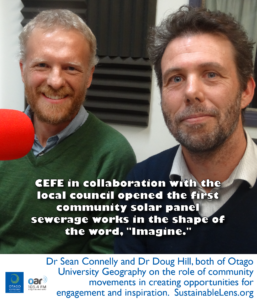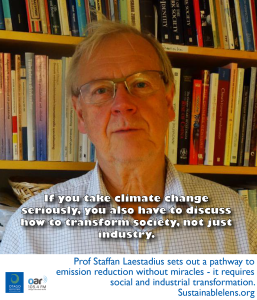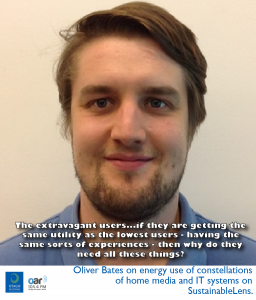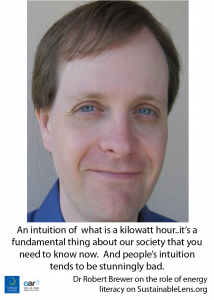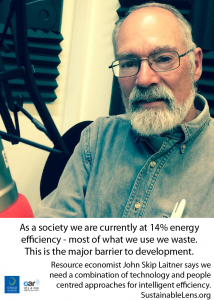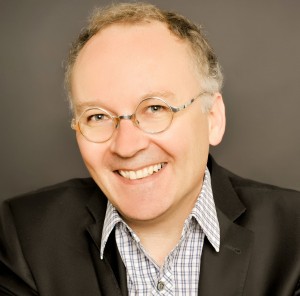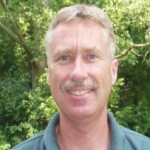| Shane: |
Our guests tonight are Dr Doug Hill and Dr Sean Connelly, both of Otago University Geography. Sean has been on the show before so I’ll skip straight to Doug Hill. He got his BA at Australian National University and his PhD at Curtin University, Perth. His research interests include South Asia, especially India, development studies, geopolitics and trans-boundary water resources – we’ll talk to you about what they are – migrant labour, ports, labour restructuring in maritime trade, world development, participatory governance in West Bengal, urban transformation and socio-spatial segregation in India’s megacities. Both of them have just given a talk entitled, “Community Power: Exploring the process for change through the Clean Energy for Eternity campaign in New South Wales, Australia,” which we’ll talk about in detail shortly. Welcome to our show. Doug, you’re from Australia originally, yes?
|
| Doug: |
I am, Shane, yes.
|
| Shane: |
Where were you born?
|
| Doug: |
I was born in Sydney, in St Leonards, which is a part of the northern part of Sydney. I lived there for only a couple of years and then my family moved to the country. For the majority of my childhood I grew up in a place called Tathra, which is in the far south coast of New South Wales, about halfway between Sydney and Melbourne, a little coastal town surrounded by forests, et cetera.
|
| Sam: |
What did you want to be when you grew up?
|
| Doug: |
I think, at that point I really wanted to be a pilot, because when I was about eight I took my first plane ride and it really gripped me that there was this great thing that you could do. My dad started talking to me about being a lecturer, actually. He was quite keen on history as a profession. Quite early on in my life I got this idea that this was a nice thing to do, go and work in a university. He particularly talked up this idea of a sabbatical, which thankfully here we still have.
|
| Shane: |
So, you went to school. Was it kind of the idyllic Australian childhood, wandering round the forests and on the beaches. What was it like?
|
| Doug: |
Yeah, it was relatively idyllic. It’s a small coastal town. A lot of people move there for lifestyle reasons, but having said that, it’s also an area that I guess was fairly socially not particularly progressive at the time that I was growing up. It’s an area where the dairy industry was predominant in that place, and so there’s fairly entrenched attitudes, I guess, around a whole a whole sorts of things. Relatively idealistic, but that always comes with those provisos about the lived experience, of what it’s like to grow up in a small country town.
|
| Shane: |
Obviously your father was encouraging you to do history. What made you change direction? Was there anything in particular, or is it just that you gradually thought, “Hey, geography’s kind of cool”?
|
| Doug: |
When I was at high school I was really interested in the political aspects. I was reasonably politically active as a high school student, and so when I went to university I started studying politics and economics in the first instance. The quantitative emphasis of economics completely lost me and so I started being drawn to development-type issues. A particular motivation for that was I had what now is called a gap year, in between leaving high school and going to university. I went to Nepal, Thailand, Indonesia, and really opened my eyes. Quite different from small, coastal Australia. That got me really fired up about development issues around the environment, et cetera. Gradually I shifted towards that kind of trajectory.
|
| Shane: |
What did you do your PhD on at Curtin? What was that?
|
| Doug: |
It was a study of some villages in West Bengal, which is an eastern State of India. At the time there had been quite a reformist-minded government in that State for the last 25 years. There was a lot of plaudits at that time for the capacity to be a model for the way that poverty alleviation might happen in rural development scenarios in eastern India. I was really interested in going and exploring that. I chose two different parts of a single district, one part of which had undergone agricultural intensification and there was a lot of increasing livelihood options for local people, and the other which continued to be fairly arid and the livelihood options in that part were quite constrained. I was looking at the differences that these things made in terms of the capacity of these institutions, which this government had brought in to try and initiate poverty alleviation.
|
| Shane: |
Wow, so you obviously have a huge focus on India. What’s the fascination for you and where did that come from?
|
| Doug: |
The initial moment is going to Nepal when I was 18 and being grasped by this very different kind of scenario. As I was an  undergraduate at university, I started periodically going to India and in between finishing my undergraduate since starting my honours, I spent a year there. By that time, I was completely hooked. In a more general sense I think it’s just a fascinating country. There’s so much diversity there. People often think about the poverty, but from somebody who teaches development studies, the interesting thing about India is there’s so many interesting solutions coming out that country. It can really tell us a lot about the constraints of development and the kind of avenues that we’re pursuing, but also the kind of solutions which me might be able to utilize and generalize in different places.
|
| Shane: |
Yeah, so your interests … I was looking at the transboundary water resources and geopolitics. That’s probably an issue in India, is it? Round that area?
|
| Doug: |
It’s a huge issue in India.
|
| Shane: |
Huge issue in India. Can you talk just a little bit about that? What is that?
|
| Doug: |
To frame it I guess, and to get our geographic imaginations going as we like to talk about it; if you think about the Tibetan plateau, and everybody has an idea about what Tibet is and what it means in terms of those broader ideas about China and the West, et cetera. What people often don’t think about is what geographers call the third pole, as a great proportion of the world’s water resources begin in that region and then flow down the mountains in the Himalayas and cross over the borders of around 11 countries. The process of it coming from the Tibetan Plateau and flowing down into the ocean, then of course it crosses national borders, provincial borders and the way that those rivers should be utilized becomes the subject of a whole range of contestation, politics, et cetera.
|
|
For the last couple of years – I guess about the last 10 years actually – I’ve been travelling to Bangladesh, to Nepal, to India. I’m involved in various groups in different parts of the world, to looking at the dialogue processes by which we can think about how to manage those resources. With a changing climate, those issues become all the more urgent.
|
| Shane: |
I was at a talk last night with the US ambassador, came down to talk about the Fulbright Forum. We were talking about Syria. The issue of Syria came up and of course the key driver of that conflict there was, in fact, a drought in the highlands, which droves the rural people down into the cities. That sparked all the conflict. How risky is it for that region that you’re looking at, for conflict to start erupting around water issues, or is that something that’s kind of outside? It is quite a serious issue.
|
| Doug: |
It’s a very serious issue. Scholars who work on this like to throw around this truism that wars have never been started over water conflict, but the reality is that the intensification of contestation over water leads to grievances which then get translated into the conditions by which conflict can occur. For example, the Indus Basin, which is basically the water between India and Pakistan. At the moment there is a dispute going on between India and Pakistan – so, the last couple of weeks – over some terrorist activity which has taken place on the border between those 2 countries, which seems to have nothing to do with water ostensibly, except now India is threatening to renege on the treaties that it’s made with Pakistan over the management of that water.
|
|
Pakistan is a country of about 200 million people that is completely dependent upon just a single basin for its water and its agricultural basis very water-intensive, so how that water is used, it’s very easy for people within Pakistan, and the military within Pakistan in particular, to start saying, “Well, this is India’s fault, why this is happening.” We see variations of this happening throughout the region. India is worried about what China is doing on the Brahmaputra, for example. Bangladesh is worried about what India is doing above it, Nepal, et cetera. Then, within each of those countries there’s also provincial level disputes. It’s a very … I really like looking at it because I think that it’s a really interesting way of thinking about the contestation over resources.
|
| Shane: |
Let’s get on to your talk today, which was about this amazing project, the Energy for Eternity in Australia. This is really interesting, because last week we had the Australian Prime Minister trying to blame renewable energy for some power outages, which was just this crazy response to a storm which knocked over a few pylons and disrupted the electricity system. Is it our understanding that in Australia renewable energy is a point of politics contestation? Would that be an accurate … ?
|
| Doug: |
Yeah, absolutely. I think that what you find in Australia is a very divided polity when it comes to these issues. There’s a lot of people within the society that can see that Australia is a perfect laboratory for the roll out of all sorts of renewable technologies and that it’s a place where we can really develop a whole range of industries and transform the economy in profound ways through this. On the other hand, it’s also a country which has, at current estimates, about 250 years of brown coal reserves and a mining industry which is very influential in politics, a media sector that is very concentrated amongst particular groups, in particular the Murdoch press, and because of that climate change politics and by extension renewable energy is very, very contentious. It is really something which it’s difficult for politicians of any shade to really get much purchase for moving things in a more progressive direction.
|
|
That’s not to say there’s not the initiative there, or that there’s no the political will, but there’s a lot of push back towards that as well. That’s one of the things that we were talking about in the talk today.
|
| Sam: |
Is Australia on the edge?
|
| Doug: |
On the edge?
|
| Sam: |
I’m thinking about how close they came with the 10 year drought.
|
| Doug: |
Australia is definitely a place which is already feeling the effects of climate change in a pretty profound way. It’s always been a country of climatic extremes. You’ve always had droughts and bush fires and storm events, et cetera, but it’s clear that that is being exacerbated. I guess, most profoundly, some of the areas which are being impacted are those areas where there’s a significant proportion of the population living. It’s hard to say objectively what on the edge means, but it’s certainly the case that it’s a country where climate change is a lived reality now.
|
| Sean: |
Which I think is a really interesting dichotomy: the politics and climate denial on the one hand but also living and experiencing the effects of climate change on almost a daily basis at the same time, which is a really interesting dynamic, I think.
|
| Sam: |
Presumably they’re aware of that tension?
|
| Doug: |
Of course. The particular movement that we were talking about today really began in 2006 at a time which is typically referred to as the climate change election. This took place at a period when there was a really significant drought and it had seeped into mainstream consciousness that this was something that government should be being proactive about. There was a wave of enthusiasm, I guess, at that point, which this movement, Clean Energy for Eternity, or CEFE, was able to harness to move forward and do lots of small scale initiatives.
|
| Shane: |
What got you involved in starting this project, because it’s outside your research areas and it’s kind of outside where you normally work? How did you get involved with it?
|
| Doug: |
So there’s 2 different things driving this. The first of them is that, in the last couple of years I’ve been working on energy issues with a think-tank based in Jakarta called Economic Research Institute of ASEAN and East Asia. We’ve been looking specifically at low-carbon transitions, so it was on my radar to start to think about these things and ask the questions. The most significant thing is that CEFE began and really prospered in Tathra, the town that I grew up in. During my sabbatical, I had the opportunity to go and spend a bit of time there. The last 10 years while I’ve been living here in Dunedin, every time I go home I hear about what CEFE is doing and look at these great initiatives and et cetera. It just seemed like a fantastic opportunity to try and understand this movement in a more significant way. Bringing Sean in is a way of really understanding that broader application of knowledge around community movements and sustainability and how we might go about understanding those.
|
| Sam: |
Is it a young people’s movement?
|
| Doug: |
No, absolutely not. It was started off by somebody called Dr. Matthew Nott, who’s a local orthopaedic surgeon, essentially in 2006 realized that this was a significant issue which perhaps he should be looking to try and take action on, and so organized a movement on the beach. 3,000 people turned up and spelled out, “Clean energy for eternity,” on the sand, Tathra having a population of about 1,500 at that point, and then thereafter got together a core group of people who formed the nucleus of the movement, most of whom, as far as I can see from my interviews, et cetera, are middle-aged with kids, some of them artists, some of them are professionals, some of them are environmental activists. But, it has been very good at including young people and other members of society, but at its focus, I think it’s certainly not a young person’s movement per se.
|
| Sam: |
That’s one of the things that people are of about critical about Generation Zero, is that it is just coming from young people. Now, they argue that’s that’s their strength, “We are the future,” sort of stuff, but it’s kind of easy for other people to ignore them. “That’s just the kids, they’ll stop complaining eventually.” It sounds like this is quite different.
|
| Doug: |
Yeah, this is quite different, and I think the way that they’re trying to initiate social change is also quite different from those sort of movements that you’re describing. They’re self-styled pragmatic, non-political organization which is interested in trying to craft local solutions and bringing in the broad tent of community members into initiating local action around climate change, so it’s not the usual suspects. I think that that also has some strengths, as well as its weaknesses as well.
|
| Sam: |
You said, “Initiate social change.” Do they have a clear message or in fact idea of what that social change … What they want?
|
| Doug: |
They absolutely do. After this first moment on the beach that I just described, they then formed a community group and did an environmental audit of the district and worked out where energy was being used, both in terms of electricity but also in terms of transport et cetera, and came up with a blueprint for the council called, “50 50 by 2020.” The idea here was to transition towards 50% usage of renewable energy and to have 50% efficiency gains in terms of the way that that was being utilized. 50 50 by 2020 became the calling card of this movement, as it spread from its initial moments in Tathra to become at various points a state-wide – or at least having representation within different parts of the state – and actually thereafter attracting national attention.
|
| Shane: |
How big is this movement now?
|
| Doug: |
It’s a bit hard to put your finger on really, because one of the strengths of it really is that it’s able to cooperate with local movements and mobilize them for specific events and then to move on and to do other things. One of the things that they’ve been interested in doing is to try and work with community groups to get renewable energy put on public buildings: surf clubs, rural fire sheds, public halls, et cetera. It brings people in, helps them to achieve these aims, and then those people may or may not be involved again. I think that nucleus of the movement, the group which is actually active around these things, is probably somewhere between 10 and 15 people, but they’re able to mobilize at various points hundreds and sometimes thousands of people for particular actions.
|
| Sam: |
We went to Oamaru last year on the basis of your geography field trip who went and looked at the Transition Town. We thought we’d go and follow up on that, and it turns out it’s only 5, 10 people. This does seem like a similar thing, that it’s quite a small group of people making a big impact. One of the things that the people in Oamaru said is, they don’t need to convince all of Oamaru, they just need to put the systems in place for them to lead the better life that they want them to. Is it a similar thing here? Are they trying to change hearts and minds, or are they just trying to get it to be better somehow?
|
| Sean: |
I think it’s probably a little bit of both. There’s certainly that … Doug’s told the story of the aha moment of this Dr. Nott of sitting on the beach when it’s abnormally hot, reading the weather makers and having this internal crisis of, “Oh my goodness, what kind of future are going to live? I need to do something.” Sort of that. So, it very much is rooted in, “We need to do drastic change,” but I think it’s interesting that there’s been through the interviews various people that have had that similar kind of moment and that served as motivation for them to actually get together and do something. But then, when they actually go about mobilizing hundreds or thousands of people for events, it is much more focused on the easy access: we’re making this accessible, come out, the whole community’s involved, everyone has a part to play, you can bring whatever politics you want with you when you come, as long as you’re there.
|
|
You know you’re there for a reason. You’re going to talk to your fellow community members and have a conversation around energy and climate issues. Hopefully, that will build more awareness and lead to further change, but it’s not directly involved in, “This is the kind of change we need to make.” It’s not directly confrontational in that regard.
|
| Sam: |
This, “Hopefully leading to further change,” there’s the crux of the question. Do we need everybody to have this aha moment, this transformation, or can we get away with just a few people having it and somehow infecting everybody else to just make the change without having that aha moment?
|
| Sean: |
I think so. I think so many of us go through our lives unthinkingly, and we use the infrastructure that’s put in front of us. If there’s a cycle path, I’ll use it. If there isn’t, I’ll get in my car, kind of thing. So many of us do that unthinkingly. Yes, I think it would be great if everyone had the aha moment and that led to a massive transformation, but I think that that point of, as long as you have key people in key roles that can make that change … There’s very few people that, I think, are fundamentally against renewable energy, are against taking action on climate change. They just struggle with, “What can I do? How can I do it? I’m already super busy. It might be inconvenient. I don’t have time.” That kind of thing, but if it’s put in front of them, they’ll embrace it. I think that changing hearts and minds, while it is important, I don’t think it is critical.
|
| Sam: |
So you said that they’ve been doing things like working to put solar panels or wind on the surf club. Is that primarily to generate the energy or is it more of an awareness and education tool?
|
| Doug: |
It’s both. It’s trying to make those local clubs have renewable energy, but it’s obviously also a very visible symbol of what the future might be. I think a really nice illustration of this is that last year, the culmination of a lot of campaigning and a lot of work, et cetera, CEFE in collaboration with the local council opened the first community solar panel sewerage works in the shape of the word, “Imagine.” If you’re coming along the flight path you can see these solar panels that have written, “Imagine,” there. If we’re purely talking about the efficiency of the way that those panels should be put together, where they should be facing et cetera, it’s a poor use of that technology, but nevertheless it’s taking up about 25% of the power that’s necessary to run that sewerage plant, and it’s that fantastic symbolic moment where people can think about it. Imagine. Imagine if the world was like this.
|
| Sam: |
To what extent is energy the easy problem we’ve gotten distracted by? We started talking about water and even in New Zealand where it’s not so intense, we don’t seem to have a solution. We don’t seem to be able to come up with a simple way of managing the stuff that doesn’t result in the water getting polluted. I can only imagine that it’s so much worse in India and Cambodia and so on. Ramp it up, put those issues on steroids. I think what I’m asking is, is that the hard stuff? Is energy, that we’ve gotten stuck on, the easy stuff, but we’ve identified energy as the poster child for sustainability, and that’s distracting us from the really hard questions?
|
| Sean: |
I think part of the issue is that energy is so attractive because it lends itself well to technological change and substitution of different energy sources, so it doesn’t actually result in making us uncomfortable thinking about how we use resources. It’s that simple solution, “Oh, okay we’ll put in an energy efficient light bulb and I’ll still leave it on all day when I go to work or when I’m not around because I’m using less energy. It’s that efficiency gains. That’s all that matters.” I think that does distract us from the much more important issues around, how do we actually live differently? How do we have to change our behaviour? How do we have those really uncomfortable conversations about, “You know what? We’re consuming too much. It’s an issue of consumption, not about energy efficiency.” I think that’s why energy is so easy to latch onto because it fits that technological change, not a social change kind of model.
|
| Shane: |
Is there a consciousness of that within the movement? Did you explore that, or was that something that ever came up?
|
| Doug: |
I think that the emphasis of the movement is around everyday changes that people can make in terms of their own life and the simple things that they can do in order to do this, but there’s also … It’s not at the forefront of what the movement is talking about, but certainly the people who are involved in it are very frustrated by the nature of the Australian political system and the fact that you have large mineral companies and others which are very influential in terms of the agenda. I think it’s a little bit of both. It’s born of a realization that there’s some really complex political realities there to try and deal with, but these are the kind of things that we can do.
|
| Shane: |
Did you have a favourite moment or event that these guys did? Apart from obviously that big … Getting 3,000 people onto a beach is pretty impressive, but was there a favourite moment you thought, “Wow, that was something else. That was something special.” Or was there something special about that you found?
|
| Doug: |
A moment that I really liked, if you go from Tathra where we’re talking about and then you go towards Canberra, you go up onto a plateau, which looks not dissimilar to Central Otago, I guess. In a similar kind of a way, there’s a great potential for wind energy there. There’s a little town up there called Nimmitabel which has about, I don’t know, I would say optimistically there’s 500 people live there. They’re very water-constrained. In the summer time they often have to truck water in.
|
|
But, a few years ago there was a proposal try and put in a wind farm up there called Boco Rock. You got Nimmitabel School, which, I don’t know exactly but I imagine has fewer than 20 kids in that school, together to form a sign which made a wind turbine. They started campaigning on the fact that this was going to be a positive thing for their area, for their school, and to go back there now, and of course, it’s not because of those kids that the Boco Rock Wind Farm is there, but it certainly demonstrated the community potential or that fact that the community was very interesting in embracing that technology. That’s a nice moment in terms of these kinds of things.
|
| Sean: |
I think the thing that sticks out to me in reading through the interview transcripts is, they took all these pictures of these human signs that they made on the beach and made calendars out of them. Someone talks about, they were in the local stores and the calendar was in the local store and the calendar was on the wall and they said, “Oh yeah, I was in the E, which part of the word were you under?” So, this was a point of connection and building identity around, “This is where we’re from. This is who we are, and we all have this shared experience around this wonderful event of making this human sign on the beach.”
|
| Doug: |
My parents are in that boat actually. The rest of my family who lives there can point out to you where they are in that sign and it’s a nice moment.
|
| Sam: |
Okay, so I’ve got a different question. Can those everyday changes, can they add up? Do they add up to a socio-ecological transformation?
|
| Doug: |
I think the history of social change is about those shifts, isn’t it? Some of them are triggered by significant events that bring to the forth people to rethink things, but often it’s just a steady accretion of a particular way of approaching something which eventually wins the day. I think that absolutely, the history of transformation is about those small moments building up into large transformations.
|
| Sam: |
Do we know which ones work?
|
| Doug: |
I think in the case of CEFE – so there’s a very specific case there – we would say that what works is building alliances with people who you wouldn’t necessarily think were you allies, but who nevertheless are interested in being part of the community, who are interested in some kind of sense of collective identity, and are interested in changing things for the better for their community. Shifting those kinds of people towards this kind of action is likely to be more successful, if we look at the CEFE case, than an adversarial politics, which seeks to confront and speak to power head on. Having said that, I would say that we can all identify instances where it’s very much that speaking-truth-to-power moment that is absolutely necessary in order to try and force social change.
|
| Sam: |
Are the people in the area and the town that they’re in, or wider, that actively think, “That’s crazy,” and are actively working against it?
|
| Doug: |
In the broader region, there’s a lot of sea changes and tree changes, people that have moved there in the last say, 20 or 30 years for the lifestyle which is offered there, so I think you’ve got a fairly sympathetic constituency there. But, the general historical nature of the region is a very conservative one, so of course, when you have that situation who think that this is just trouble makers and that this is … In Australia there’s a lot of people who think that climate change is a myth anyway, but I think in this particular case, because you’ve got somebody leading the movement who is an orthopaedic surgeon rather than some kind of rat-bag intellectual or some kind environmental activist et cetera-
|
| Sam: |
Geographers!
|
| Doug: |
Yeah, there’s this veneer of respectability that goes that goes with that, which I think has helped the legitimacy of the movement. It’s interesting dynamics going on, but anywhere in Australia you’ve got people who are passionately opposed to climate change and people who are rabidly trying to mitigate the worst of it. That’s not necessarily the case that either of them are particularly well-informed in taking those positions.
|
| Sam: |
Do you have a go-to definition of sustainability?
|
| Doug: |
This your moment.
|
| Sean: |
I wouldn’t call it a definition but an approach building on what we’ve been talking about. It is fundamentally about doing something differently. Things have to change. Of course we can do things differently in a regressive way, but we can also do things differently in a way that puts us more in tune about our relationship to the environment and our relationship to each other, in ways that promote well-being. I think that’s how I would approach it.
|
| Sam: |
The sample of students that you get to see is a biased subset, because they’ve chosen geography, but are they coming through getting that?
|
| Doug: |
Yeah.
|
| Sean: |
Yeah, I think they are. I was really taken by how you started off with the person from western Sydney around how do you embed these things into education and ensure that once they leave, that they’re actually embracing those kind values and those attributes and carrying it forward into their lives. I think for the most part, geography students do. It is a fundamental aspect of it.
|
| Doug: |
I think that at the very least, they intellectually acknowledge that there’s some really serious problems with the current trajectory of the world. Now, there’s obviously going to be differences in the extent to which they then embrace that and modify their own behaviour and become actively involved in that, but I think most of them aspire to do something in their lives which is going to further sustainability. We’ve got a good cohort in that sense.
|
| Sam: |
We’re writing a book about these conversations. We’re calling it, “Tomorrow’s Heroes.” How would you describe your superpower? What is it that you’re bringing to the good fight?
|
| Doug: |
My superpower?
|
| Sam: |
Yeah.
|
| Doug: |
My superpower is that I’m good at grasping lots of complex ideas and explaining them in a way which is accessible to people, if that’s not too big a claim. I think that that’s really important because we need to be able to speak and have conversations about these things in lots of different ways to lots of different people in order to communicate these kind of issues. I think you need to be able to do that.
|
| Sam: |
What’s the biggest success that you’ve had in the last couple of years?
|
| Doug: |
I think that the work on transboundary water. I’ve been involved in a series of dialogues, different stakeholders in different parts of the region. Some of them have been sponsored by the Australian aid donors with universities in Australia, and some of them have been in European-based think tanks. I think that that’s part capacity building, part dialogue, but I think that it’s really important to try and get people from around South Asia together to talk about the commonalities and differences they have around those water issues. Being involved in that, I can’t claim any particular credit for progress, but in terms of what’s been most satisfying for seeing social change, that’s definitely right up there.
|
| Sam: |
Do you consider yourself to be an activist?
|
| Doug: |
I consider myself to be an engaged teacher. I don’t think that I have the time or the energy to be an activist in a way that I would want, but I think that I’m really lucky in my job allows me talk about a whole range of different things and go and find out about them and talk to people involved in those things, and then communicate them to people here. That’s a form of activism, but it’s disingenuous perhaps, to says that’s activism, per se.
|
| Sean: |
I guess, do you think that’s putting activism upon a pedestal that makes it out of reach?
|
| Doug: |
Yeah, maybe. Sure.
|
| Sean: |
Maybe we should rethink. Activism doesn’t have to be this big, massive marching in the streets or doing these really, really radical things. Maybe there’s all kinds of other ways, as you’re talking about, teaching …
|
| Doug: |
Absolutely. Look, there’s lots of things that have changed the way that I think about the world, but one of them was about going to university. I think that we’re in a really … It’s a fantastic position to be in, that you can change the way that people think about the world. That’s a big thing.
|
| Sam: |
Should we be following Bob Huish’s lead? Should we have Dissent 101?
|
| Doug: |
I think that students are active to learn about how they can be involved in social change. I think that when you look around the world with campuses that run courses and degrees on activism, they’ve been incredibly popular and the students that have come out of that have gained a lot from them. I think that, if we’re interested in sustainability, we need to be helping our students to gain those kind of tools, so why not?
|
| Sam: |
Do you think you could get it passed the senate or council or whoever it is? Why don’t we ask them? Shane?
|
| Shane: |
There might be something in the plan. There might be something afoot already. That’s all I can say.
|
| Sam: |
What motivates you?
|
| Doug: |
I’m interested in stuff. It’s nice to get people to think about things in a different way.
|
| Sam: |
What challenges are you looking forward to in the next couple of years?
|
| Doug: |
Personally or professionally or … ?
|
| Sam: |
You can have both.
|
| Doug: |
I think that, as somebody who works on a region which is going to be one of the largest economies in the world in the next couple of years, and is already the third largest emitter of carbon – that is India – I’m concerned and optimistic and extremely pessimistic and all sorts of contradictory sentiments about the rise of that country and what it’s going to mean for the globe. Not for the global economy or for the lifestyles of the people in the West, but there’s 1.3 billion people there and the trajectory that it’s moving on is obviously going to put further pressure on the finite resources of our globe. That’s a big challenge.
|
| Sam: |
Does sustainability mean the same thing there?
|
| Doug: |
I think it depends a lot on who you’re talking to. I think that there’s a lot of people … If you have population where, somewhere between 300 and 700 million people, depending on whose figures you believe, are really below or only just above the poverty line, then sustainability for those people is being able to live a life with dignity, which means they won’t die early and see their family die early, and won’t irrevocably erode the resources around them. What sustainability means for a middle class person in India that’s now experiencing lifestyles that was unavailable to their parents, is perhaps a whole other thing. The challenge, I guess, is to try and cater for of those groups of people, have inclusive growth, but do so in a way which going to shift India towards a low-carbon economy. It’s a very, very big challenge.
|
| Sam: |
For those vast numbers living in abject poverty, it would be churlish of us to begrudge them a fridge.
|
| Doug: |
Of course.
|
| Sam: |
But, can we do it?
|
| Doug: |
Yeah, I think that it’s going to be a long time till all of those people have fridges, but I think that this is the challenge, isn’t it? To try and … I’m not saying that all of the solutions are technological, but clearly we can’t have the same fridges for 700 million people in India that we do elsewhere, otherwise … The white goods industry will be happy, but it’s going to be a problem. I’m not sure what the answer to that is. I think the rise of India as an economic force is not entirely assured, either. I think that the jury’s still out on that. We always think about it as, “Well, in the future, we’re going to suddenly have 800 million people who are middle class.” I’m not sure whether that’s true.
|
| Sam: |
Do you have any advice for our listeners?
|
| Doug: |
That you should be active participants in your own life, that you should try and gain different perspectives on familiar phenomena as much as you can, and if you feel strongly about something then you should try and take action on it. You should try and work out what kind of action that might mean for you, but you should nevertheless try and do that.
|

 Shane Montague-Gallagher and Samuel Mann with Scott Willis [ 56:41 ] Play Now | Play in Popup | Download
Shane Montague-Gallagher and Samuel Mann with Scott Willis [ 56:41 ] Play Now | Play in Popup | Download